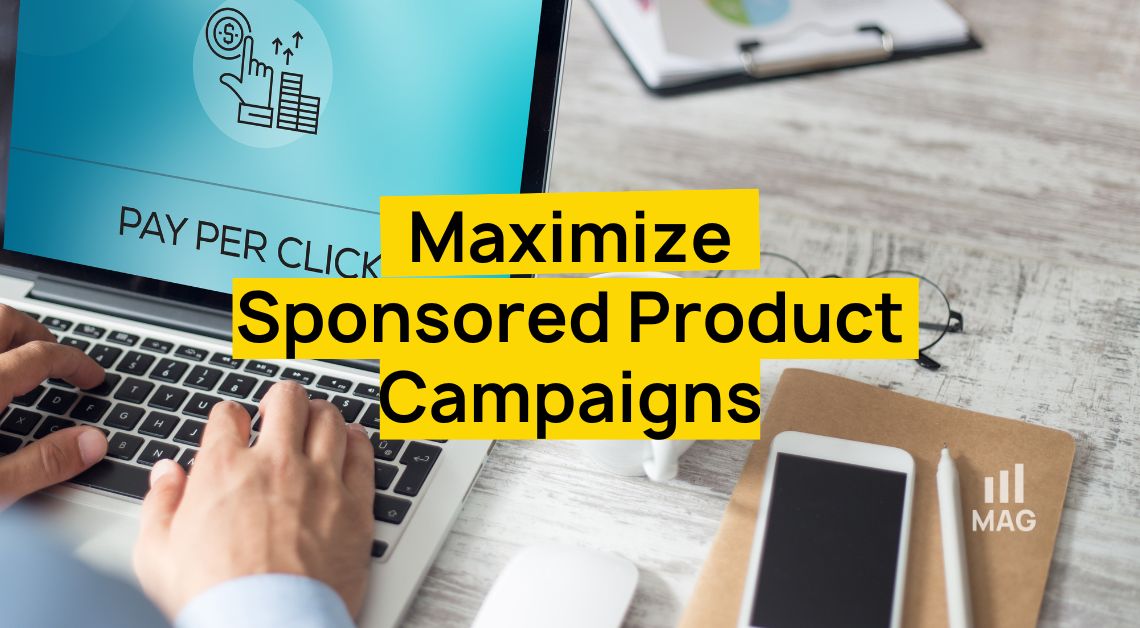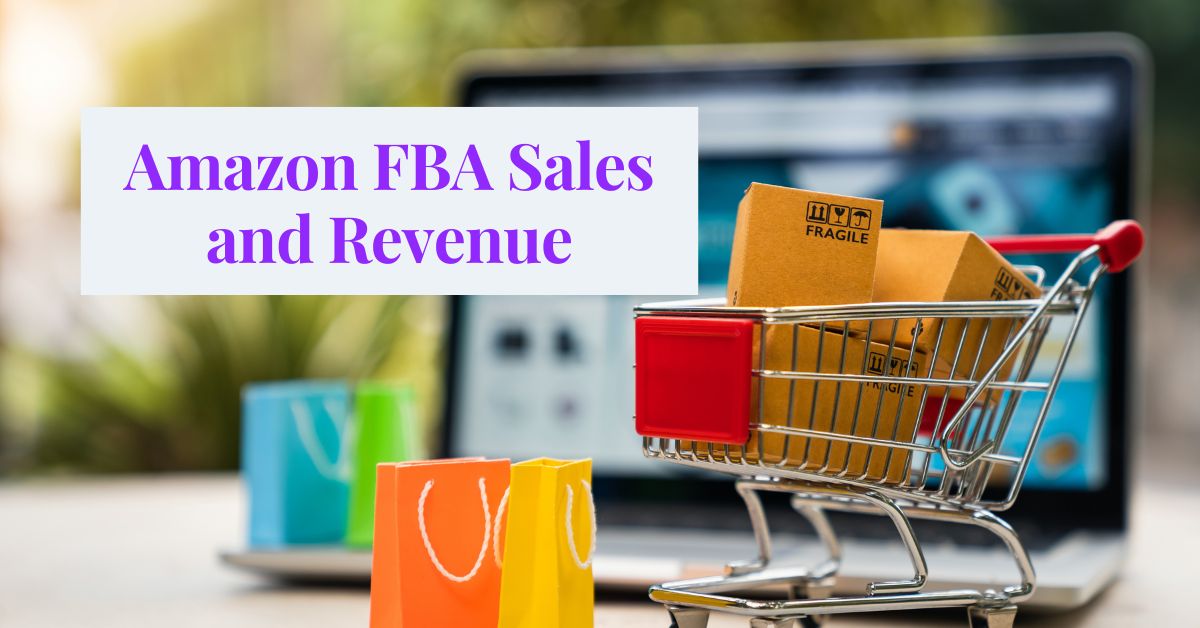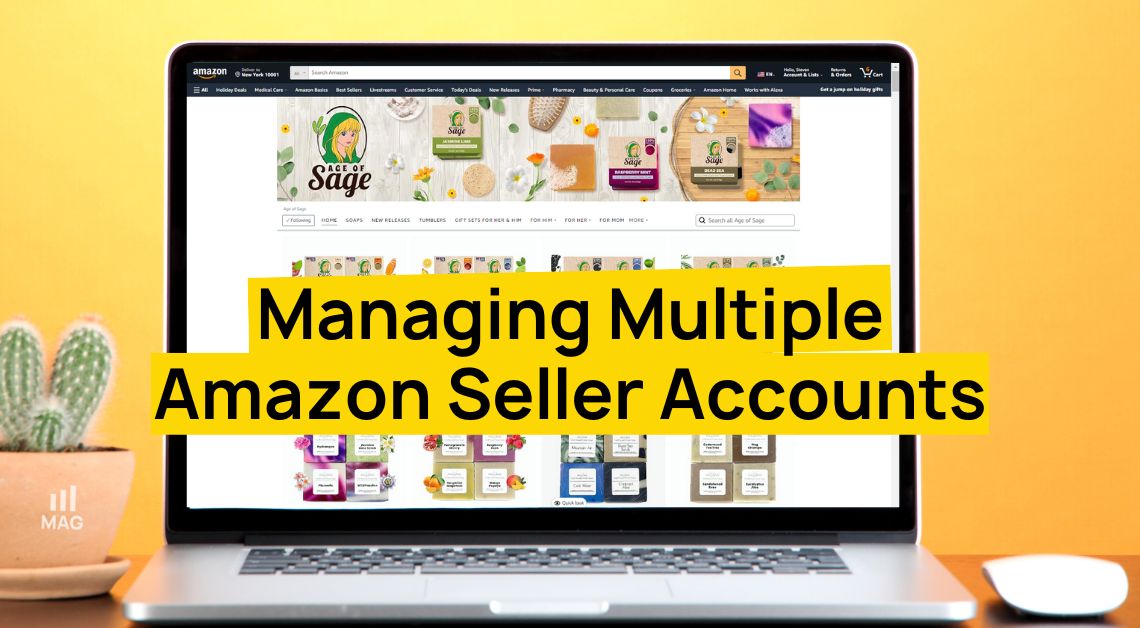Don’t waste your ad spend! Master the ultimate Amazon PPC guide for 2024.
Got a brand new product that deserves some love? You launched it, it’s on Amazon, but… crickets?
That’s where Amazon PPC (Pay-Per-Click) comes in. It’s like advertising your product online to the exact kind of customers you want to see it.
Now, PPC might sound fancy, but this guide is all about making it simple for beginners. We’ll break it down step-by-step, so you can launch your product like a pro and watch those sales climb.

Understanding Pay-Per-Click Campaign
- 00:00 - SEO and AI in E-commerce
- 00:10 - Increasing Competitiveness in PPC
- 00:17 - Importance of Creatives, SEO, and PPC
- 00:39 - Product Innovation as a Key Differentiator
- 01:02 - Reviews and Pricing
- 01:17 - Business Fundamentals on Amazon
- 01:31 - Significance of UPS and Quality Products
- 01:52 - Omni-Channel Strategies and Off-Amazon Traffic
- 02:25 - Leveraging Off-Amazon Traffic
Your product’s on Amazon, but nobody sees it? Amazon Ads (PPC) are your secret weapon.
Amazon PPC stands for Pay-Per-Click advertising. It’s a type of Amazon marketing tool specifically designed for sellers on the Amazon platform.
With millions of other products on Amazon, it can be tough to get customers to stop and notice yours. That’s where Amazon PPC comes in.
Think of PPC as a way to create a mini-ad for your product. This sponsored product ad appears on Amazon whenever someone searches for something similar to what you’re selling.
And the best part? You only pay when someone clicks on your ad to learn more, not just for people seeing it in passing.
It’s like a cost-effective way to stand out in a crowded marketplace. You only pay when someone shows genuine interest in your product, making it a great option for beginners who want to get their products noticed.
Why Advertise Your New Amazon Product Using a PPC Campaign?
Imagine Amazon as a huge mall, but online. With PPC ads, it’s like putting a bright sign on your product for people already browsing for similar items.
More clicks = higher ranking on Amazon = more sales!
This is why it’s awesome:
- Right People See You: Reach shoppers actively searching for what you sell, not random strangers.
- Climb the Ranks: The more clicks, the higher your product appears!
- Set Goals & Track Progress: Want more sales or better ranking? Ads let you track progress.
- Pay-Per-Click Savings: You only pay when someone clicks your ad campaign, unlike traditional advertising. It’s like free Amazon advertising until someone clicks.
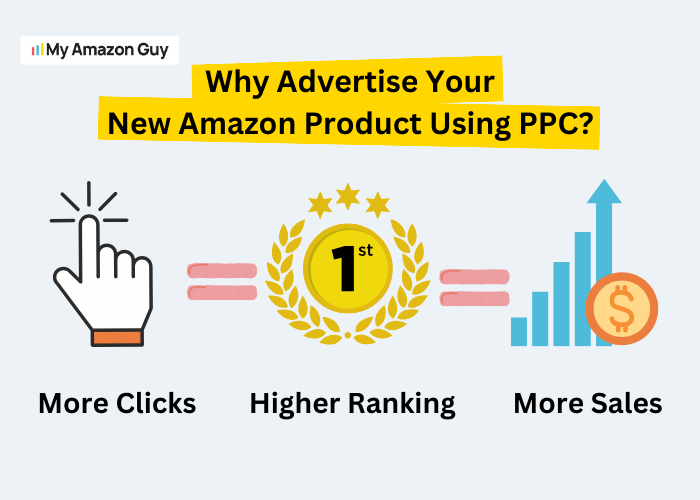
The Complete Step-by-Step Guide in 2024 to Crush Your Amazon PPC Campaign
Here’s a roadmap to help you build a winning Amazon PPC strategy from scratch:
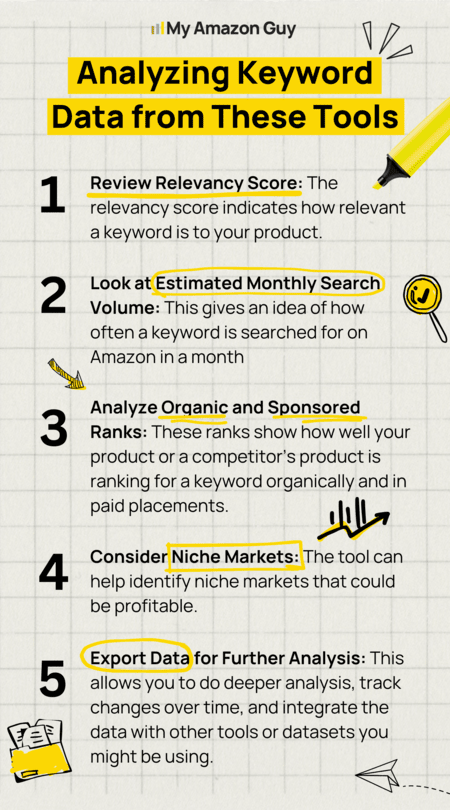
Step 1: Keyword Research is King
When you’re searching for something on Amazon do you think about how many other people are looking for that same thing every month?
That’s called search volume, and it’s an important factor to consider when choosing keywords for your PPC campaigns.
You want keywords with high search volume, but also low competition. This will help you get your ads seen by more potential customers without having to compete against too many other Amazon sellers.
There are a few different ways to find the golden keywords for your products. Here are a few tips:
- Use tools like Jungle Scout and analyze competitors’ advertising strategies.
- Find relevant keywords with high search volume.
- Target Amazon keywords with low competition.
Step 2: Ad Campaign Structure Symphony
There are two main campaign types, each with its pros and cons:
Automatic Campaigns
Pros
- Easy to Use
Perfect for beginners, no need for in-depth keyword research or bidding strategies. - Quick Setup
Get your PPC campaigns running fast without extensive setup time. - Discover New Keywords
May discover relevant keywords you might have missed.
Cons
- Lack of Control
Limited control over targeting and bidding can lead to wasted ad spend on irrelevant searches. - Potential for Waste
May target irrelevant keywords or bid too high, impacting your advertising costs. - Limited Optimization
Difficult to fine-tune campaigns for optimal performance.
Manual Campaigns
Pros
- Precise Targeting
Control who sees your ads by choosing specific keywords and targeting options. - Optimized Bidding
Set bids for individual keywords to maximize return on ad spend (ROAS). - Advanced Strategies
Allows for A/B testing and other advanced optimization techniques.
Cons
- Steeper Learning Curve
Requires research and understanding of bidding strategies, keyword research, and campaign management. - Time Commitment
Takes more time and effort to set up and manage compared to automatic campaigns. - Potential for Mistakes
Manual bidding requires monitoring to avoid overspending or underbidding.
Step 3: Create Effective Amazon Ads
Three core elements contribute to a successful ad:
- Unique Selling Proposition (USP): Showcase your product’s unique edge to grab attention and stand out from the crowd
- Relevant Keywords: Weave relevant keywords naturally to ensure shoppers searching for similar items find your ad.
- Clear Call To Action (CTA): Tell them what to do next! A strong call to action like “Shop Now” turns clicks into sales.
By combining these three elements, you can craft good Amazon PPC ads that grab attention.
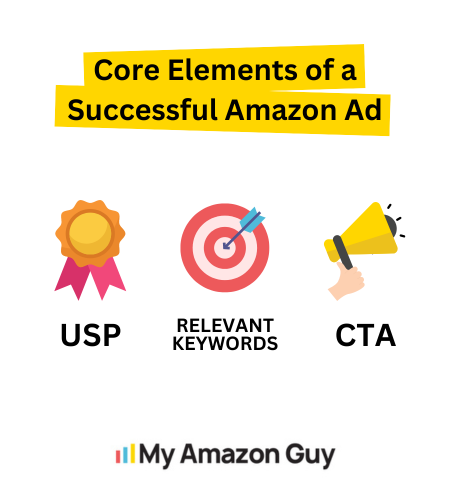
Setting Up an Amazon Ad: A Quick Guide
1. Pick Your Ad Type
Choose between Sponsored Products, which appear next to search results, or Sponsored Brands, which are eye-catching video or headline ads at the top of search results.
2. Set Budget
For your daily budget, start small. $20 if you’re a new business, or go higher with $500+ if you’re already established. Adjust this amount as needed later on.
3. Create Your Winning Campaign
Create a clear campaign name that includes product details and targeting methods in the name. Then, choose the specific products you want to advertise using their SKUs (unique product codes).
4. Targeting Options
When it comes to targeting, you have two main options: Automatic (easy) and Manual (more control). Choose based on your comfort level.
- Automatic: Monitor and add negative keywords to avoid irrelevant searches.
- Manual Keywords: Choose specific search terms customers might use to find your product (broad, phrase, or exact match).
- Manual Products: Target competitor products, complementary products, or browsing categories.
5. Monitor & Optimize
Regularly check your campaigns and adjust bids/targeting for maximum impact.
Step 4: Bidding Strategies for the Win
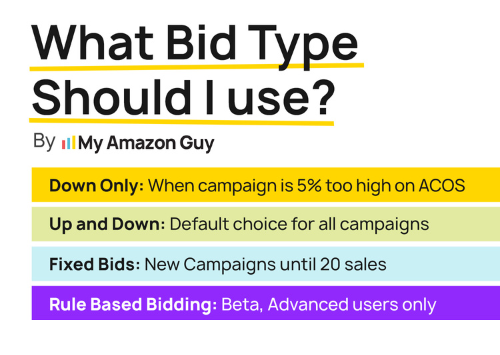
Bidding on PPC ads is like setting your max price for someone to click on your ad. Imagine an auction, but instead of buying objects, you’re buying clicks to your product on Amazon.
There are two types of bidding strategies: Automatic Bidding and Manual Bidding.
Automatic Bidding is great for new sellers or those who want a simpler approach. This is used when you want to get started quickly and save time in managing bids.
On the other hand, Manual Bidding is best used by experienced sellers who want the most control over their budget. So, if you want to set exact prices per click, target specific keywords, or optimize for goals, try this bidding strategy instead.
Automatic Bidding
Pros
- Easy to Set Up
You don’t need to spend time researching and setting individual bids. - Saves Time
Amazon’s system automatically manages your bids for you.
Cons
- Less Control
You have less control over how much you’re spending on each click. - Potential for Wasted Spend
Automatic bidding might target irrelevant searches or bid too high.
Manual Bidding
Pros
- More Control
You decide the maximum amount you’re willing to pay for each click. - Potential for Cost Savings
You can avoid unnecessary clicks by setting lower bids.
Cons
- Requires More Effort
You need to monitor your bids and adjust them regularly. - Risk of Overspending
If you’re not careful, you could end up paying too much per click.
Tip: Start with Automatic Bidding, then switch to Manual Bidding for more control as you learn.
Step 5: Launch, Monitor, and Optimize Like a MAGnificent Pro!
Launching your Amazon PPC campaign is just the beginning.
Do these and be a PPC pro:
- Regularly check how your ads perform.
- Increase bids for keywords that bring in sales (high ROAS).
- Lower bids or block irrelevant keywords (low sales, high ACOS).
- Find profitable search terms and launch new targeted campaigns for them.
- Use tools like SellerBoard to get deeper insights. This helps you make the best decisions to optimize your campaign.
What to Look for When Monitoring PPC Ads
Here are the key things to look for when monitoring PPC ads:
Profitability
- High ROAS (Return On Ad Spend): Increase bids for keywords with high ROAS.
- Low Sales/High ACOS (Advertising Cost Of Sale): Decrease bids or add negative keywords for products with low sales or high ACOS.
Search Terms
- Identify profitable search terms not currently targeted and launch new campaigns for them.
- Find irrelevant search terms and add them as negative keywords to exclude them from future ad placements.
Placements
- See where your ads are showing (top of search vs rest of search) and adjust bids accordingly.
- Increase bids for placements with high performance and decrease bids for low performing placements.
Types of Amazon PPC Ads
We’ve covered the basics of PPC campaigns, but what kind of ad will you use to grab attention?
Experimenting with different ad formats allows you to see what matches best with your target audience and optimizes your overall PPC strategy for maximum impact.
These are the three main PPC ad formats on Amazon:
Sponsored Products Ads: The Classics
Think of these as tiny billboards for your product right where shoppers are already looking.
Sponsored Products appear on search results pages (SERPs) and product detail pages. They include an eye-catching headline, your product image, and the current price.
If you want to boost your product visibility and drive direct sales, our Amazon agency recommends that you try this out.
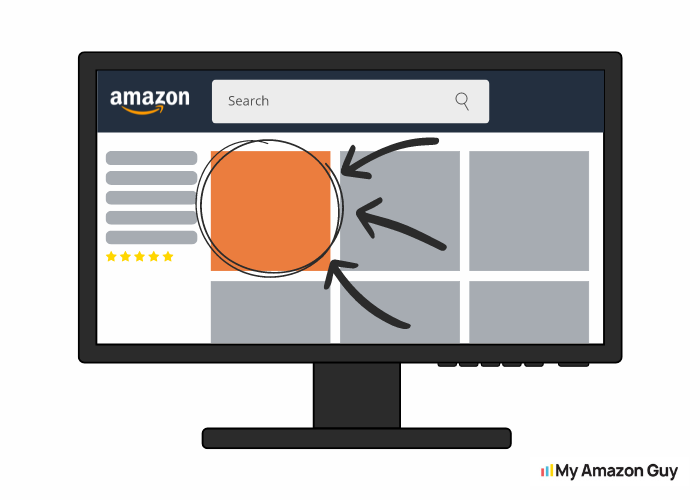
Sponsored Brands Ads: Shine a Light on Your Brand
Sponsored Brands Ads feature your brand logo and a custom headline. It can also display multiple product listings from your catalog.
This format is ideal for improving brand awareness and promoting a variety of your products at once.
Sponsored Display Ads: Cast a Wider Net
Sponsored Display Ads appear on relevant websites and apps visited by potential customers who might be interested in your product category. These visually engaging ads can keep your brand at the forefront of their minds even when they’re browsing outside of Amazon.
Use Amazon Sponsored Display Ads to reach a wider audience beyond Amazon and stay top-of-mind with potential customers.
Amazon Seller Guide: Avoid Common Amazon PPC Mistakes
Ever feel like your Amazon pay-per-click campaigns aren’t quite delivering the results you expected? You’re not alone.
Many sellers fall into common traps that can drain your budget without generating sales.
Here’s a breakdown of key insights from our Amazon agency to help you avoid these PPC pitfalls and optimize your PPC campaigns for success:
Setting Up and Walking Away
Just setting your Amazon business PPC campaigns up and letting them run won’t get you the best results. You need to check in on them regularly, see how they’re doing, and make adjustments as needed to make them more effective
Trying to Do Everything at Once
Amazon PPC offers a variety of features, but it’s important to focus your efforts initially.
Start with the core: Sponsored Products Ads. These classic billboard-style ads put your product in front of shoppers actively searching for relevant items.
Once you’ve got a handle on Sponsored Products, consider exploring Sponsored Brands Ads (for brand awareness) and Sponsored Display Ads (to reach a wider audience).
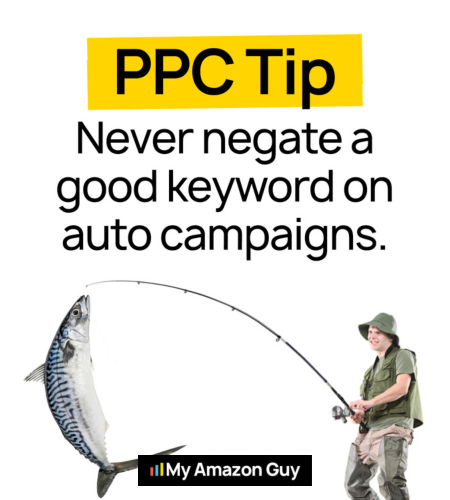
Keyword Mismanagement
Keywords are the foundation of your PPC advertising campaigns.
Don’t get lured in by the siren song of high-volume generic keywords. These are often fiercely competitive and might not be the best fit for your specific product.
Instead, focus on identifying niche keywords that accurately describe your product, even if they have lower search volume. Targeting the right audience, even if it’s smaller, can lead to better conversions and a higher return on your ad spend.
Key Takeaway: Focus, Analyze, and Optimize
By avoiding these common mistakes, you can set your Amazon PPC campaigns on the right track.
Remember, prioritize core features first, focus on niche keywords, and don’t be afraid to analyze data and optimize your campaigns over time.
With a little effort, you can turn your PPC campaigns into powerful tools to attract targeted customers and boost your Amazon sales.
Actionable Amazon PPC Strategies
Retarget Ads
Struggling to sell a product on Amazon? You’re not alone. While optimizing listings and pricing is crucial, consider retargeting ads in your Amazon PPC strategy for 2024.
These ads reach past purchasers of related products (even from other brands!), reminding them of your perfect add-on and boosting conversion rates.
Target Prohibited Keywords
Target prohibited keywords (trademarks, sensitive topics) in your 2024 Amazon PPC campaigns.
Reach new audiences for niche products & those with restricted claims. PPC won’t hurt your listing.
Don't Just Launch, Dominate: Mastering Amazon PPC Strategies
This guide has launched you into the world of Amazon PPC. Now, to truly dominate, keep these key strategies in mind:
- Target Niche Keywords
- Try Different Ad Types
- Analyze and Optimize
- Don’t Set and Forget
You’ve got the basics down, but there’s always room to grow.
Want to take your PPC skills to the next level? Check out our Amazon agency‘s PPC course.
It will equip you with advanced strategies and techniques to dominate the ever-evolving world of Amazon advertising.





